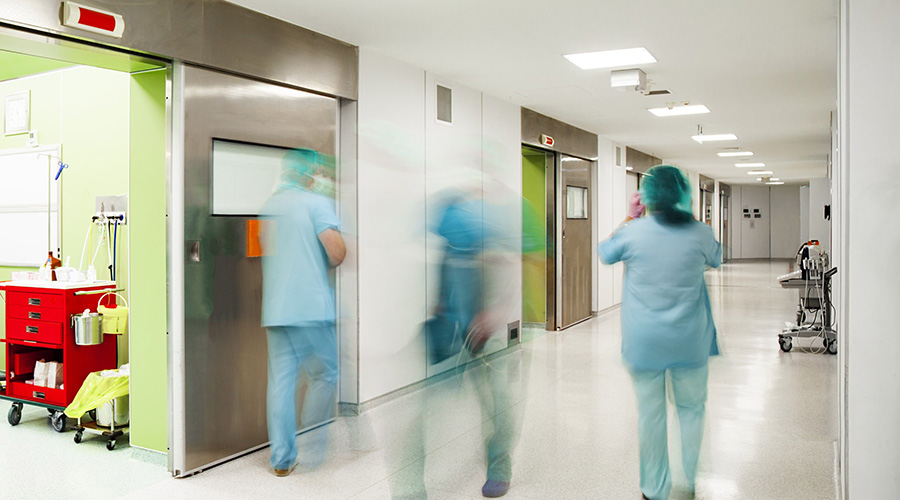Q: Do doors in smoke barriers in healthcare occupancies have to be tested and inspected? Section 7.2.1.15.2 of the 2012 Life Safety Code says smoke door assemblies have to be inspected and tested in accordance with NFPA 105.
A: Well, the answer is no… Smoke barrier doors that are non-rated are not required to be inspected annually in healthcare occupancies, even though 7.2.1.15.2 says they do. Here’s why:
-
Section 19.3.7.8 says doors in smoke barriers shall comply with 8.5.4 and all of the following: 1) Doors shall be self-closing; 2) Latching hardware is not required; and 3) The doors do not have to swing in direction of travel.
-
Section 8.5.4.2 says where required by chapters 11 through 43, doors in smoke barriers that are required to be smoke leakage-rated shall comply with section 8.2.2.4. [NOTE: Chapters 18 & 19 for healthcare occupancies do not require smoke leakage-rated doors in smoke barriers…. Therefore, compliance with section 8.2.2.4 is not required.]
-
Section 8.2.2.4(4) says where door assemblies are required elsewhere in the Code to be smoke leakage-rated, door assemblies shall be inspected in accordance with 7.2.1.15.
CONCLUSION: Since the healthcare occupancy chapters do not require smoke barrier doors to be smoke leakage-rated, then there is no requirement to be compliant with 7.2.1.15.2 that says the smoke doors need to be inspected.
Section 4.4.2.3 says where specific requirements contained in chapters 11 through 43 differ from general requirements contained in chapters 1 through 4 and from chapter 6 through 10, then the requirements of chapters 11 through 43 govern. Since the healthcare chapters do not require smoke barrier doors to be smoke leakage-rated, then it conflicts with section 7.2.1.1.5.2, and when that happens, you follow the occupancy chapter requirements.
The problem is… not all authorities having jurisdictions (AHJs) know this or understand this. Case in point: CMS recently instructed their state agency Life Safety surveyors that all smoke doors in healthcare occupancies need to be tested and inspected, citing section 7.2.1.15.2.
In addition, CMS is also teaching their LS surveyors that doors in healthcare occupancies that meet the requirements of 7.2.1.15.1 have to be tested as well, which is not entirely true. These doors identified in 7.2.1.15.1 only have to be tested in assembly occupancies, educational occupancies, or residential board & care occupancies. The exception is, some hospitals have mixed occupancies that include the requirements for assembly occupancies, so in those cases, yes, the doors in 7.2.1.15.1 would have to be tested and inspected on an annual basis.
Since CMS and their state agencies are AHJs, you must follow their requirements, even if their requirements are not consistent with the NFPA codes and standards. Let’s just hope CMS finds the errors of their ways and rescinds their directive for all of the non-required testing and inspections.
Brad Keyes, CHSP, is the owner of KEYES Life Safety Compliance, and his expertise is in the management of the Life Safety Program, including the Environment of Care and Emergency Management programs.

 Making the Energy Efficiency Case to the C-Suite
Making the Energy Efficiency Case to the C-Suite How to Avoid HAIs This Flu Season
How to Avoid HAIs This Flu Season Design Phase Set to Begin for Hospital Annex at SUNY Upstate Medical
Design Phase Set to Begin for Hospital Annex at SUNY Upstate Medical Building Hospital Resilience in an Era of Extreme Weather
Building Hospital Resilience in an Era of Extreme Weather Ennoble Care Falls Victim to Data Breach
Ennoble Care Falls Victim to Data Breach